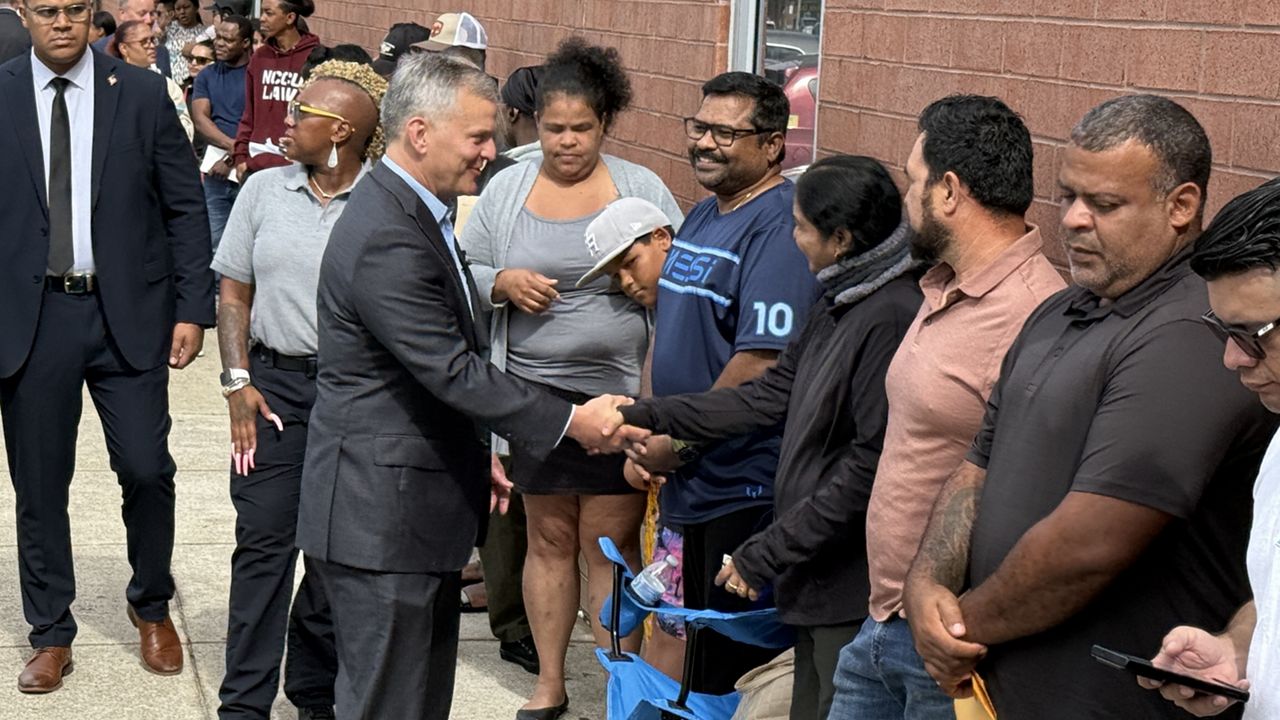CHARLOTTE, N.C. – An alternative to speed bumps is hitting roads across the state.
"Speed Cushions" are a cheaper and easier way to curb speeding on neighborhood streets, according to David Smith, engineering and operations division manager for the Charlotte Department of Transportation.
What You Need To Know
- "Speed Cushions" are a cheaper and easier way to curb speeding on neighborhood streets
- The City of Charlotte has installed about 70 speed cushions since 2019
- Raleigh, Asheville and Monroe are among other cities using them to slow down drivers
- Traditional speed humps are labor intensive to install, according to the engineering and operations division manager for the Charlotte Department of Transportation.
Charlotte’s population is rapidly growing, and so is traffic congestion during rush hour, which is leading more drivers to cut through neighborhoods.
“Neighborhood speeding is one of the complaints we do frequently get,” Smith said.
Smith says he gets several requests a week to slow down traffic on those side streets – such as installing speed humps.
“Speed humps are very labor intensive to install,” Smith said.“Speed humps are very labor intensive to install,” Smith said.
The transportation department is working to clear a backlog of more than 100 requests, according to Smith. He believes speed cushions could help erase the growing list.
Speed cushions are made of rubber, rather than asphalt, and Smith says they’re about a third of the cost of speed humps and are easier to install. They’re also designed with emergency vehicles in mind. Gaps between the rubber pieces allow firetrucks or ambulances to pass through without having a major impact on their response time.
“We want to slow down, without slowing down those first responders,” Smith said.
Since 1997, nearly 2,000 speed-calming devices, mainly speed humps, have been installed across Charlotte. The city started installing speed cushions in 2019 and have installed about 70 since then.
“So [speed cushions] are easier, meaning we can [install] them quickly,” Smith said. “And because they’re cheaper, we can stretch the dollars we have for these types of devices further.”
Smith says they still plan to build speed humps where necessary, but more speed cushions are expected to pop up across Charlotte.
“And hopefully we can work on that backlog of getting the neighborhoods that’ve been waiting on these devices installed,” Smith said. “And they will come off the list and be happier with speeds in their neighborhood.”
To qualify for a speed hump or speed cushion, Smith says streets need to have a posted speed limit of 25 mph, and 15% of drivers need to be going 30 mph or faster. Smith also says they can not build speed cushions or humps on a main roadway.
To request a speed hump or cushion, visit the city’s website.
Speed cushions are also popping up in other parts of the state. Raleigh launched a pilot project and placed three speed cushions near Carnage Middle School.
Asheville and Monroe are also among the cities using them to slow down drivers.






)


